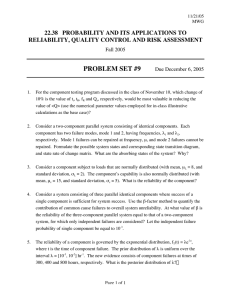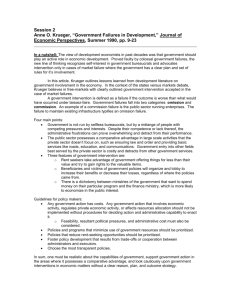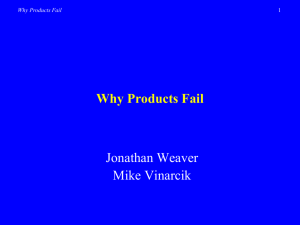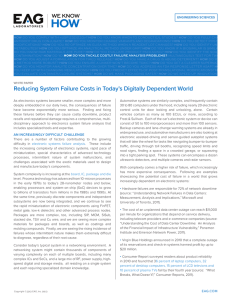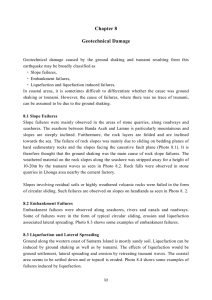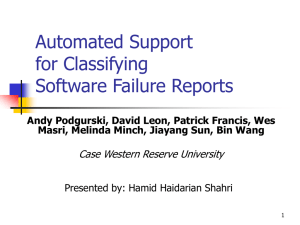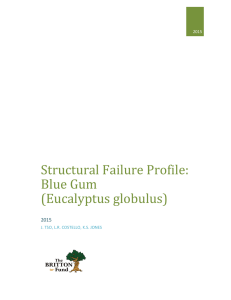Purpose: Method and Materials: over ten years were analyzed.
advertisement
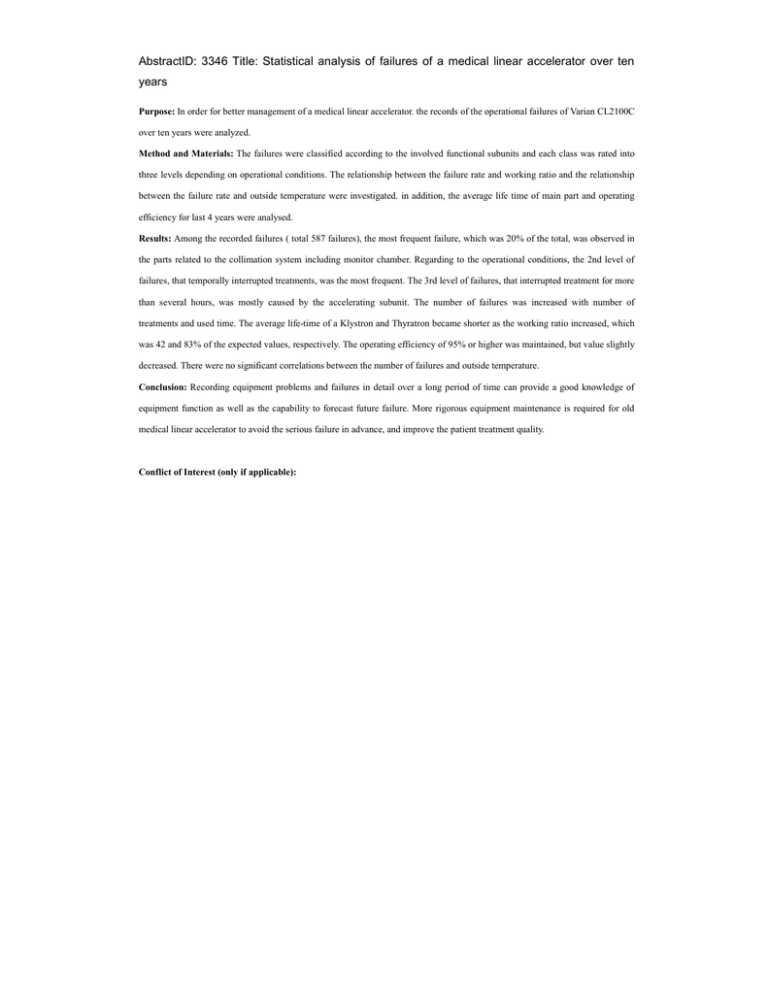
Purpose: In order for better management of a medical linear accelerator. the records of the operational failures of Varian CL2100C over ten years were analyzed. Method and Materials: The failures were classified according to the involved functional subunits and each class was rated into three levels depending on operational conditions. The relationship between the failure rate and working ratio and the relationship between the failure rate and outside temperature were investigated. in addition, the average life time of main part and operating efficiency for last 4 years were analysed. Results: Among the recorded failures ( total 587 failures), the most frequent failure, which was 20% of the total, was observed in the parts related to the collimation system including monitor chamber. Regarding to the operational conditions, the 2nd level of failures, that temporally interrupted treatments, was the most frequent. The 3rd level of failures, that interrupted treatment for more than several hours, was mostly caused by the accelerating subunit. The number of failures was increased with number of treatments and used time. The average life-time of a Klystron and Thyratron became shorter as the working ratio increased, which was 42 and 83% of the expected values, respectively. The operating efficiency of 95% or higher was maintained, but value slightly decreased. There were no significant correlations between the number of failures and outside temperature. Conclusion: Recording equipment problems and failures in detail over a long period of time can provide a good knowledge of equipment function as well as the capability to forecast future failure. More rigorous equipment maintenance is required for old medical linear accelerator to avoid the serious failure in advance, and improve the patient treatment quality. Conflict of Interest (only if applicable):

